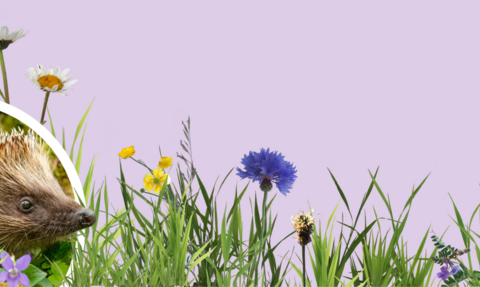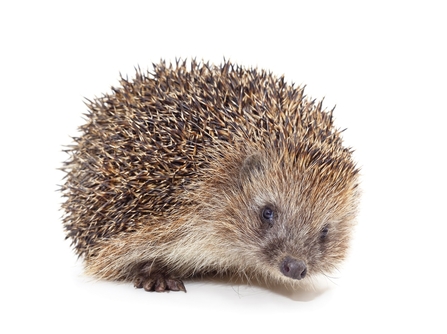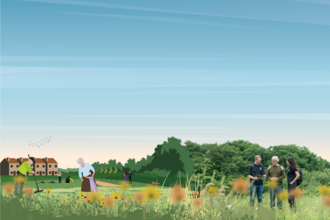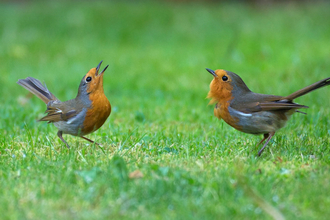
Homes for Hedgehogs
Nature recovery networks
Somerset may be a relatively rural county, but at the current time, only 10% of the county can be classified as being in good natural or semi-natural condition, with species-rich natural habitats supporting abundant and diverse wildlife. We may see green fields and open spaces, but these areas aren’t necessarily contributing towards our goal of having 30% of land and sea managed for wildlife by 2030.
Somerset Wildlife Trust manages 1,700 hectares of precious nature reserves, but these in isolation just aren’t enough to help nature recover. We need to create a strong, interconnected network of wild spaces which together will restore our ecosystems at a landscape scale, providing us with healthy soils, clean air and water.
Within this nature recovery network we need core areas of excellent habitat – our nature reserves for example – connected via semi improved land to smaller good quality habitat fragments. Building this network helps species migrate across the landscape, building robust habitats full of diverse flora and fauna.
Pathways to connectivity
Creating this network is not something we can do alone. We need to work with our peers, partners, communities, farmers and landowners to develop positive ‘restoration pathways’ and identify key actions that can be used to improve habitat connectivity and create space for nature. Land of any size can contribute to the Nature Recovery Network – nature reserves, community spaces, gardens, farms, parks, churchyards and schools – it works at any scale.
The role of gardens
The role of gardens as part of a Nature Recovery Network is hugely important. If we are to meet our target of 30% of land and sea being managed for wildlife by 2030, we need everyone who has a garden or green space - no matter how big or how small - to understand how important those places are to the much bigger nature recovery network. Every garden that has areas managed for wildlife is helping support nature recovery, helping address climate change and providing health and wellbeing benefits to us all.
Whilst sometimes small, urban gardens can be some of the most diverse habitats in the country, providing homes, shelter breeding sites and food, and forage for a plethora of birds, invertebrates, plants, mammals and reptiles. Landscapes of concrete, tarmac, steel, fake grass and solid fences provide barriers to wildlife and can - and do - exacerbate environmental issues. But well-designed wildlife areas or ‘rewilded/wilded' gardens and green spaces provide the opposite.
Your garden could be part of a massive network of green spaces, a framework or even ‘green lung’ providing links for species to move through to feed and breed and connecting to parks and other urban green spaces, as well as the wider countryside beyond. Our gardens can form the bedrock of the nature recovery network running through villages towns and cities. Think of each garden as part of the puzzle. The more connected and greater these areas the greater the benefits.
Pollinators
Wilded lawns and flower packed garden beds not only provide food for pollinators such as bees, butterflies, hoverflies and moths (and who can’t be impressed by an exotic looking hummingbird hawkmoth or scarlet tiger for example!) but also absorb rainfall as it hits the ground, locking moisture into the soil and reducing issues of run off in heat periods of rain.
Garden trees for example help provide clean air by absorbing air pollution, providing oxygen and valuable shade, keeping temperatures cooler on a rapidly heating planet. And think of all that carbon being locked away as the trees grow.
Similarly, our garden ponds, no matter how big or small provide a refugia and water source for huge amounts of biodiversity, from the smallest water flea to dragonfly and damselfly, frogs, newts, and toads, and even in some cases otter and even water vole!
Be part of something bigger
We could talk forever about how amazing gardens are for our nature recovery network but to bring it back to the charming little species we all love, it’s important to note that hedgehogs are one species that massively benefits from a network of wildlife gardens. We’ve mentioned how hedgehogs need to be able to wander over large distances in search of food, nest site and for mates, but your garden can also help a huge range of wildlife and be part of something even bigger…

Thank you for being a hedgehog hero
This is only the tip of the iceberg when it comes to actions you can take to protect Somerset’s hedgehogs. Keep your eyes peeled for our regular emails over the next 3 months, which will cover all sorts of exciting tips!



